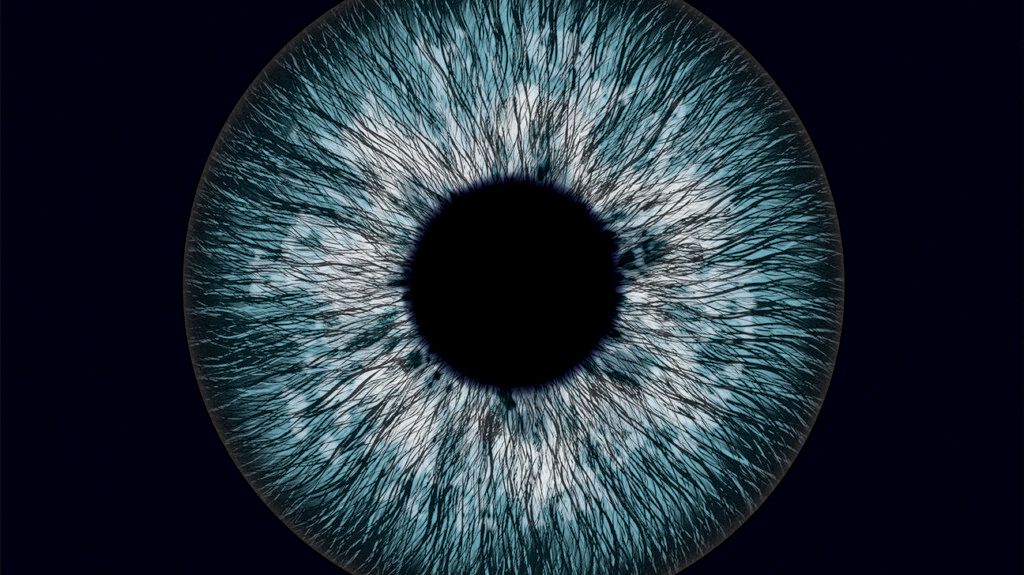Tractional retinal detachment occurs if scar tissue in the eye causes the retina to move out of position. It requires immediate medical attention.
The retina is a light-sensitive layer of cells at the back of the eye. It passes signals to the brain to create the images forming our vision.
Retinal detachment occurs if the retina moves out of position and pulls away from the back of the eye.
Tractional retinal detachment occurs if scar tissue causes the retina to detach from the back of the eye.
This article examines the causes, symptoms, diagnosis, treatment, prevention, and outlook for tractional retinal detachment.

According to the
Diabetic retinopathy is an eye condition that can occur with diabetes and causes damage to blood vessels in the retina. This damage can create scar tissue on the retina, pulling the retina away from the back wall of the eye and causing it to detach.
Tractional retinal detachment may also occur
- retinal vein occlusion, which is a blocked vein in the retina
- retinal vasculitis, an inflammatory eye condition
- uveitis, a type of inflammation in the eye
- injury or trauma to the eye
- sickle cell retinopathy, which may occur with sickle cell disease
- proliferative vitreoretinopathy, which may occur due to eye trauma or a complication of surgery for retinal detachment
Symptoms of tractional retinal detachment
- seeing flashing lights, for example, after something hits the eye
- multiple new floaters, such as lines, spots, or cobweb-like shapes across the field of vision
- a shadow or dark curtain across the side or section of vision
Tractional retinal detachment is a medical emergency. If people have any of the above symptoms, they need to seek medical help immediately. They can consult an eye doctor or the emergency room.
To diagnose tractional retinal detachment, doctors may carry out the following
- Slit-lamp: A slit-lamp is a microscope to examine structures within the eye.
- Fundoscopy: Dilated fundoscopy, or ophthalmoscopy, examines the structures at the back of the eye.
- Fundus photo: This technique takes an image of the fundus, which is the back area of the eye.
- Fundus fluorescein angiography (FFA): FFA uses a specialized dye to create an image of blood vessels in the retina.
- Optical coherence tomography (OCT) scan: An OCT scan is an imaging test that creates a cross-sectional image of the retina. A doctor may first use eye drops to dilate the pupil for a clearer examination.
- Ultrasound: Doctors may also use an ultrasound of the eye to examine the position of the retina.
Doctors use surgery to repair a tractional detached retina, and these techniques include the following types of procedures:
- Vitrectomy: A doctor will remove the vitreous, the gel-like substance filling the middle of the eye. A doctor will then replace this with a bubble of gas, air, or oil, which pushes the retina back into position.
- Pneumatic retinopexy: A doctor injects a small bubble of gas inside the eye, which pushes the retina back into position at the back wall of the eye. Over time, the eye replaces the gas bubble with fluid.
- Scleral buckle: A doctor will attach a permanent rubber or soft plastic band to the eyeball, which will not be visible to people. This band applies gentle pressure to the eye to push the retina back into position.
Complications of tractional retinal detachment or retinal detachment surgery
- retinal ischemia, which refers to reduced blood flow to the retina
- bleeding in the vitreous
- higher than typical eye pressure
- cataracts
- neovascular glaucoma, which is the formation of new blood vessels across the eye
- repeated retinal detachment
Doctors may treat complications with medications or further surgical procedures.
Read about preventing eye damage from diabetes.
Any type of diabetes can
Controlling diabetes is one of the most important steps in helping prevent diabetic retinopathy and tractional retinal detachment.
Staying physically active and eating a balanced diet can help keep blood sugar within optimal ranges. People will also need to take any diabetic medications as a doctor prescribes.
Those with diabetes or risk factors for tractional retinal detachment
People with diabetes need to attend a comprehensive dilated eye exam
Avoiding other risk factors, such as wearing protective eyewear when necessary, may also prevent other causes of tractional retinal detachment, such as eye injury.
Learn more about diabetic eye exams.
Immediate treatment
The outlook for tractional retinal detachment may depend on the severity of damage to the retina and whether other eye conditions are present.
A delay in diagnosis and treatment
Surgery aims to preserve vision and prevent any further vision loss. Advanced and prolonged diabetic retinopathy may worsen the outlook.
The success of surgical treatment may also depend on factors such as the type of procedure and skill level of the surgeon.
Eye health resources
Visit our dedicated hub for more research-backed information and in-depth resources on eye health.
Tractional retinal detachment occurs when the retina comes away from the back wall of the eye due to scarring. This can occur due to diabetic retinopathy, eye diseases, or eye trauma.
Tractional retinal detachment is a medical emergency that requires immediate treatment. Symptoms include sudden flashing lights, multiple new floaters, and a shadow across the vision.
Prompt treatment may help prevent complications such as vision loss. Treatment may involve surgery to push the retina back into position.
